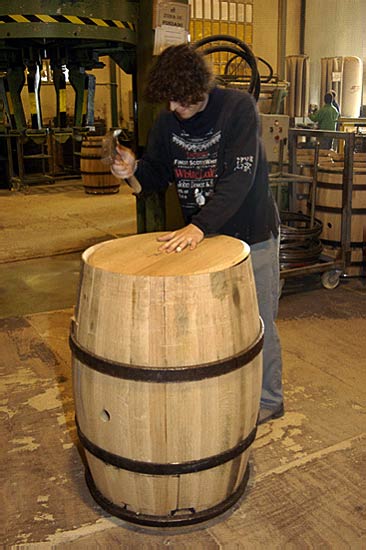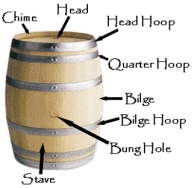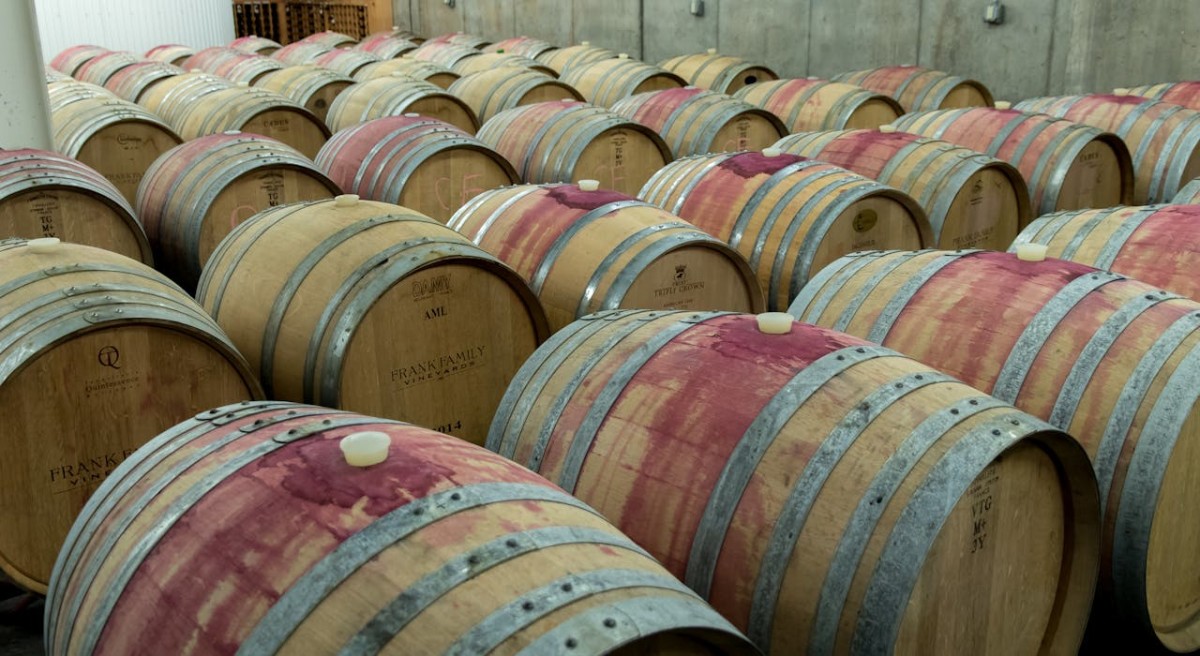How Wine Barrels Are Made
As the first step of making a barrel the preferred oak type is selected, and block staves are cut. In America the wood is sawed into staves and there is little waste. Sawing, however, exposes more of the grain to the spirit, and this tends to raise the tannin levels and the astringency of the oak.
European oak, however, is more porous than American oak and must be split along the grain of the wood, rather than sawn, in order to avoid subsequent barrel leakage.
Not only is this much more time-consuming, but there is considerable waste; accordingly European oak barrels can be twice as expensive as those from America.
The wood then needs to be dried; there are two primary options:

Barrel-Ready White Oak Species
Quercus Alba: Prevalent in the east-coast forests of Maine and Pennsylvania through to Wisconsin and Minnesota and then down to Missouri and Arkansas; this species is particularly non-porous. A very strong oak which offers structural differences in its hemicellulose and lignin resulting in more intense vanilla, wood sugars and toastiness. Its density, high tyloses content and straight grain means higher yields, machine cutting and subsequently lower costs. Canadian oaks have similar properties but produce less vanillin.
Quercus Sessilis: Found throughout Europe this more hardy oak is lower in tannin than other species. These trees grow slower and are smaller, creating fine grain and extremely subtle extraction. Research shows that its hemicellulose breaks down more easily than other similar species, thereby forming a different spectrum of toasty aromas. More commonly known as sessile oak, this tight-grained wood is much desired by winemakers.
Quercus Petraea: Grown in the Alliers, Nevers, Tronçais and Vosges Forests, this species of sessile oak produces spice notes that stem from naturally occurring extracts. With a lower tyloses content than Quercus alba this fragile oak needs to be split along the grain in order to produce non-porous barrels.
Quercus Robur: Grown in the Limousin Forest this is a more solitary tree. Its preference for soil rich in water results in its more rapid growth, thicker trunks and coarser grain, which subsequently allows above-average evaporation from casks made with it. A wide-grained wood with excellent tannin levels but offering less in the way of lignins than other species. As with Quercus petraea it must be split along the grain rather than sawn in order to ensure that the resultant barrels do not leak. It is also found in Bulgaria, Hungary, Russia and Slovenia where it has a finer grain, moderate tannin content and a lower quantity of aromatic components.
Barrel Making
Kiln-drying
Kiln-drying is quick and relatively straightforward. However, its detractors argue that it does not always dry the wood properly which results in leakage, and that it retains too much of the feistier elements of wood character which may result in imbalanced spirits.
Air-drying
Air-drying can take up to three years, requires unpolluted air and has the effect of leaching out tannins and lignins, thus imparting a more subtle character to the spirit.
Most American oak is kiln-dried, oost French oak is air-dried and many European countries use a combination of the two. The ideal result is a humidity level of 15% within the wood.
The cut staves next need to be trimmed and shaped to fit the cask. Using
heat the wood must be bent so that the rigidity of shape and the metal
hoops are all that are required to hold the barrel together. The method
chosen to heat the staves - options include open or gas fires, steam and
immersion in boiling water - determines in many ways the character of
the spirit ultimately aged in the barrels. The barrel ends are fitted,
sometimes in a different oak to allow additional vanillin or tannin
extraction and the barrel is filled.
When fire is used the inside
of the barrel becomes toasted and the end user may specify a light,
medium or heavy toast when purchasing barrels. The heaviest toast or
char, where the inside of the barrels are actually set alight, is very
popular in America. This breaks open the grain enabling huge amounts of
the oak’s elements to be absorbed as well as imparting charred notes to
the spirit. In general, toasting the staves breaks down the woods
lignins making it easier for a spirit to absorb them, but it has an
inverse effect on the tannins, which become progressively less
accessible to the spirit as the level of toast increases. almost all
spirits casks are toasted to some extent, during or following
production.
Parts of a Barrel

The capacity of a barrel comes from both practical experience and historical use. From large scale storage in vats that can also be used for blending, to smaller movable barrels and casks. In one case the volume of the wine barrel was equal to the amount of wine from grapes harvested from a certain piece of land. This was most common in vineyard areas as a vine worker’s wage could be measured in barrels, which in turn lead to measuring the harvest of an entire vineyard in numbers of barrels; this was generally around 225 litres from 800-1000 vines planted on 500 acres, or half a hectare.
American oak casks produced for the bourbon trade are between 180-200 litres in size, the hogshead often used for whisky is approximately 250 litres, the most common cognac casks are 300-350 litres and in the Armagnac region casks are often 400-440 litres or even up to 800 litres.
Wine barrels are different again with the traditional Bordeaux cask holding 225 litres and made up of 26-30mm x 22mm staves while the more robust Burgundy is 228 litres in capacity and slightly shorter and wider than the Bordeaux with 27mm thick staves. sherry and port butts are generally 470-500 litres while the port pipe is smaller in girth but greater in length.







